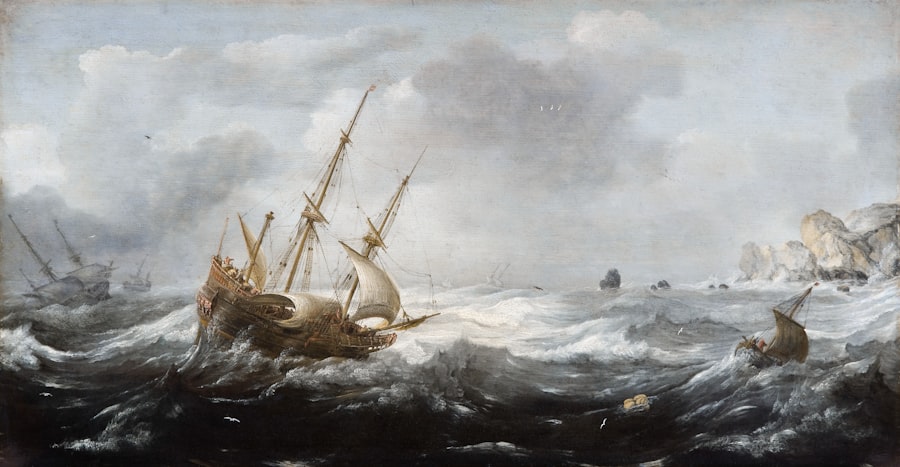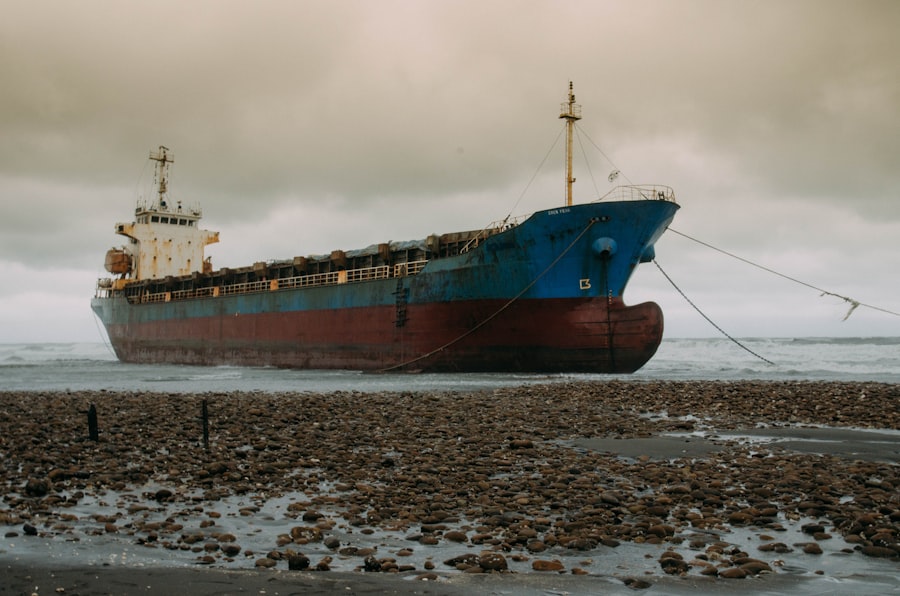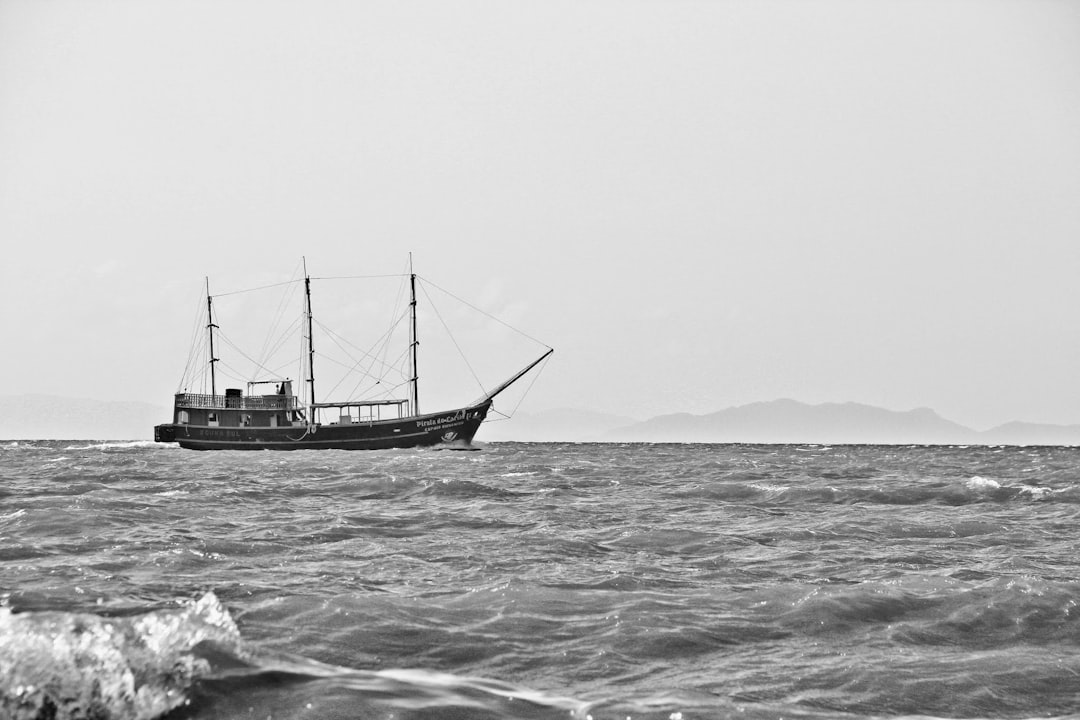The Drake Passage, a body of water located between the southern tip of South America and Antarctica, is renowned for its tumultuous seas and unpredictable weather. Stretching approximately 600 miles, this narrow strait serves as a critical maritime route for vessels traveling to and from the Antarctic region. The passage is named after Sir Francis Drake, the English explorer who navigated these waters in the late 16th century.
Its significance extends beyond mere geography; it represents a formidable challenge for sailors and a gateway to one of the most remote areas on Earth. Navigating the Drake Passage is often described as a rite of passage for seafarers, as it is notorious for its rough conditions. The confluence of the Atlantic and Pacific Oceans creates a unique environment where powerful currents and fierce winds converge, leading to unpredictable weather patterns.
This combination of factors has earned the Drake Passage a reputation as one of the most treacherous maritime routes in the world. Despite its dangers, the passage remains a vital corridor for research vessels, cruise ships, and fishing boats, all drawn by the allure of Antarctica’s pristine wilderness.
Key Takeaways
- The Drake Passage is a treacherous body of water located between South America’s Cape Horn and the South Shetland Islands of Antarctica.
- Historical accounts of shipwrecks in the Drake Passage date back to the 16th century, with numerous vessels succumbing to its dangerous conditions.
- Notable shipwrecks in the Drake Passage include the Endurance, the San Telmo, and the Lady Elizabeth, each with its own harrowing tale of loss and survival.
- The perils of navigating the Drake Passage include extreme weather, strong winds, and unpredictable seas, making it one of the most challenging maritime routes in the world.
- Environmental factors contributing to shipwrecks in the Drake Passage include icebergs, rough seas, and the region’s remote and inhospitable nature, posing significant risks to ships and their crews.
Historical Accounts of Shipwrecks in the Drake Passage
Throughout history, the Drake Passage has been the site of numerous shipwrecks, each telling a story of human ambition and the relentless power of nature. Early explorers, driven by the desire to discover new lands and trade routes, often found themselves at the mercy of the passage’s fierce storms and turbulent waters. The accounts of these shipwrecks serve as cautionary tales, highlighting the risks associated with navigating this perilous stretch of ocean.
One of the earliest recorded shipwrecks in the Drake Passage occurred in 1578 when Sir Francis Drake himself lost several ships during his expedition. The treacherous conditions claimed vessels like the “Golden Hinde,” which faced fierce gales and towering waves. Such incidents not only marked significant moments in maritime history but also underscored the challenges faced by explorers venturing into uncharted territories.
As time progressed, more ships would meet similar fates, each contributing to a growing list of maritime tragedies that would haunt the passage.
Notable Shipwrecks in the Drake Passage

Among the many shipwrecks that have occurred in the Drake Passage, a few stand out due to their historical significance and dramatic narratives. One such incident is the sinking of the “SS Bounty” in 1789, which became infamous not only for its tragic end but also for its connection to the mutiny that took place aboard. The ship was ultimately lost in the treacherous waters of the Drake Passage, illustrating how even well-prepared vessels could succumb to nature’s fury.
Another notable wreck is that of the “Antarctic,” which sank in 1914 while attempting to navigate through the passage. The vessel was caught in a violent storm that overwhelmed its crew and led to its demise. The loss of life was significant, and this tragedy served as a stark reminder of the dangers inherent in maritime exploration during that era.
These shipwrecks are not merely historical footnotes; they represent the human struggle against nature and the relentless pursuit of adventure that has characterized seafaring for centuries.
The Perils of Navigating the Drake Passage
| Metrics | Values |
|---|---|
| Distance | 600 miles |
| Width | 800 kilometers |
| Depth | 4,000 meters |
| Wind Speed | 70 mph |
| Wave Height | 30 feet |
The perils associated with navigating the Drake Passage are manifold, making it a daunting challenge for even the most experienced mariners. One of the primary dangers is the unpredictable weather, which can shift from calm to chaotic within moments. Sailors often face sudden storms characterized by high winds and towering waves that can reach heights of over 30 feet.
These conditions can easily overwhelm vessels, leading to capsizing or structural failure. In addition to severe weather, navigators must contend with strong currents and shifting icebergs that pose additional hazards. The confluence of oceanic currents creates turbulent waters that can be difficult to navigate, especially for larger vessels.
Furthermore, icebergs calving from glaciers can drift into shipping lanes, creating obstacles that require constant vigilance. The combination of these factors makes traversing the Drake Passage a test of skill and endurance, where even minor miscalculations can have dire consequences.
Environmental Factors Contributing to Shipwrecks in the Drake Passage
The environmental factors contributing to shipwrecks in the Drake Passage are complex and multifaceted. One significant element is the unique geography of the region, where deep oceanic trenches meet continental shelves. This topography can create sudden changes in water depth and currents, leading to unpredictable navigation challenges.
Additionally, the cold waters surrounding Antarctica contribute to rapid weather changes that can catch sailors off guard. Another critical factor is climate change, which has been altering weather patterns in recent years. As global temperatures rise, storms in the Drake Passage have become more intense and frequent, increasing the likelihood of maritime accidents.
Melting ice caps also contribute to shifting currents and increased iceberg activity, further complicating navigation efforts. These environmental changes not only pose risks to vessels but also highlight the broader implications of climate change on maritime safety.
Rescue and Survival Stories from Shipwrecks in the Drake Passage

Amidst the tragedies that have unfolded in the Drake Passage, there are also remarkable stories of survival and resilience. One such tale is that of a group of sailors who survived a shipwreck during a violent storm in 2003. After their vessel capsized, they clung to debris for hours before being rescued by a passing research ship.
Their harrowing experience underscored not only their determination but also the importance of preparedness and teamwork in life-or-death situations. Another inspiring story comes from a 1985 incident involving a fishing vessel that sank after hitting an iceberg. The crew managed to escape into lifeboats and faced freezing temperatures while awaiting rescue.
Their ordeal lasted several days before they were finally spotted by a passing cargo ship. This story serves as a testament to human endurance and ingenuity in the face of overwhelming odds, reminding us that even in dire circumstances, hope can prevail.
The Impact of Shipwrecks on the Environment of the Drake Passage
Shipwrecks in the Drake Passage have far-reaching consequences for the marine environment. When vessels sink, they can release harmful substances such as fuel oil and cargo into the surrounding waters, posing threats to local ecosystems. These pollutants can have devastating effects on marine life, disrupting food chains and harming species that inhabit this fragile environment.
Moreover, shipwrecks can alter underwater landscapes by creating artificial reefs or introducing invasive species that disrupt local biodiversity. While some wrecks may provide habitats for certain marine organisms, they can also lead to ecological imbalances if non-native species establish themselves in these waters. The environmental impact of shipwrecks highlights the need for responsible navigation practices and effective response strategies to mitigate potential harm.
Modern Navigation and Safety Measures in the Drake Passage
In response to the dangers associated with navigating the Drake Passage, modern technology has significantly improved safety measures for vessels traversing these waters. Advanced navigation systems equipped with GPS and radar allow sailors to monitor weather conditions and track potential hazards more effectively than ever before. These tools enable mariners to make informed decisions about their routes and avoid dangerous situations.
Additionally, international regulations governing shipping practices have been established to enhance safety standards in this challenging region. Mandatory training programs for crew members focus on emergency preparedness and response strategies tailored specifically for navigating treacherous waters like those found in the Drake Passage. These advancements reflect a growing recognition of the need for safety in maritime operations, ensuring that future generations can navigate these waters with greater confidence.
The Drake Passage in Literature and Popular Culture
The Drake Passage has captured the imagination of writers and artists throughout history, serving as a backdrop for tales of adventure, exploration, and survival. In literature, it often symbolizes both danger and discovery—a place where human ambition meets nature’s indomitable force. Authors have used this setting to explore themes of resilience and courage against overwhelming odds.
These portrayals not only entertain but also educate audiences about the challenges faced by those who dare to navigate these treacherous waters. The Drake Passage continues to inspire creativity across various mediums, reminding us of its enduring significance in human history.
The Future of Shipping in the Drake Passage
As global trade continues to evolve, so too does shipping through the Drake Passage. With increasing interest in Antarctic resources and tourism, there is a growing need for sustainable practices that balance economic interests with environmental protection. Future shipping routes may require innovative solutions that prioritize safety while minimizing ecological impacts.
Moreover, advancements in technology may lead to new methods for monitoring weather patterns and ocean conditions more accurately than ever before. This could enhance navigational safety while allowing vessels to operate more efficiently within this challenging environment. As humanity’s relationship with nature evolves, so too will our approach to navigating one of its most formidable passages.
Remembering the Ships Lost at Sea in the Drake Passage
The Drake Passage stands as a testament to both human ambition and nature’s power—a place where countless ships have ventured forth only to meet their fate among its turbulent waters. Each shipwreck tells a story not only of loss but also of resilience and survival against overwhelming odds. As we reflect on these maritime tragedies, it is essential to remember those who braved these treacherous seas in pursuit of exploration and adventure.
In honoring their memory, society must also recognize the importance of safeguarding this unique environment for future generations. By learning from past experiences and implementing modern safety measures, humanity can continue to navigate these waters with respect for both nature’s beauty and its inherent dangers. The legacy of those lost at sea serves as a reminder that while ambition drives exploration, it is humility before nature that ensures survival amidst its vastness.
The Drake Passage, known for its treacherous waters and unpredictable weather, has been the site of numerous shipwrecks throughout history. Mariners attempting to navigate this perilous stretch between the southern tip of South America and Antarctica have often faced formidable challenges. An interesting article that delves into the history and stories of ships lost in the Drake Passage can be found on MyGeoQuest. For more detailed insights and historical accounts, you can read the full article by visiting this link.
WATCH NOW! Drake Passage: Earth’s Deadliest Waters Revealed
FAQs
What is the Drake Passage?
The Drake Passage is the body of water between the southern tip of South America and the northern tip of the Antarctic Peninsula. It is known for its rough seas and challenging sailing conditions.
Why is the Drake Passage considered dangerous for ships?
The Drake Passage is known for its strong winds, large waves, and unpredictable weather patterns. These conditions make it challenging for ships to navigate, especially during the winter months.
How many ships have been lost in the Drake Passage?
There have been several ships lost in the Drake Passage over the years, with exact numbers varying depending on the source. The treacherous conditions of the passage have led to numerous shipwrecks and maritime disasters.
What are some famous shipwrecks in the Drake Passage?
One of the most famous shipwrecks in the Drake Passage is that of the Endurance, the ship used by Sir Ernest Shackleton during his ill-fated Antarctic expedition in 1914. The Endurance was crushed by ice and eventually sank in the waters of the passage.
What safety measures are in place for ships traveling through the Drake Passage?
Ships traveling through the Drake Passage are equipped with modern navigation and communication systems to help them navigate the challenging conditions. Additionally, many ships are accompanied by experienced crew members who are familiar with the passage and its potential hazards.
